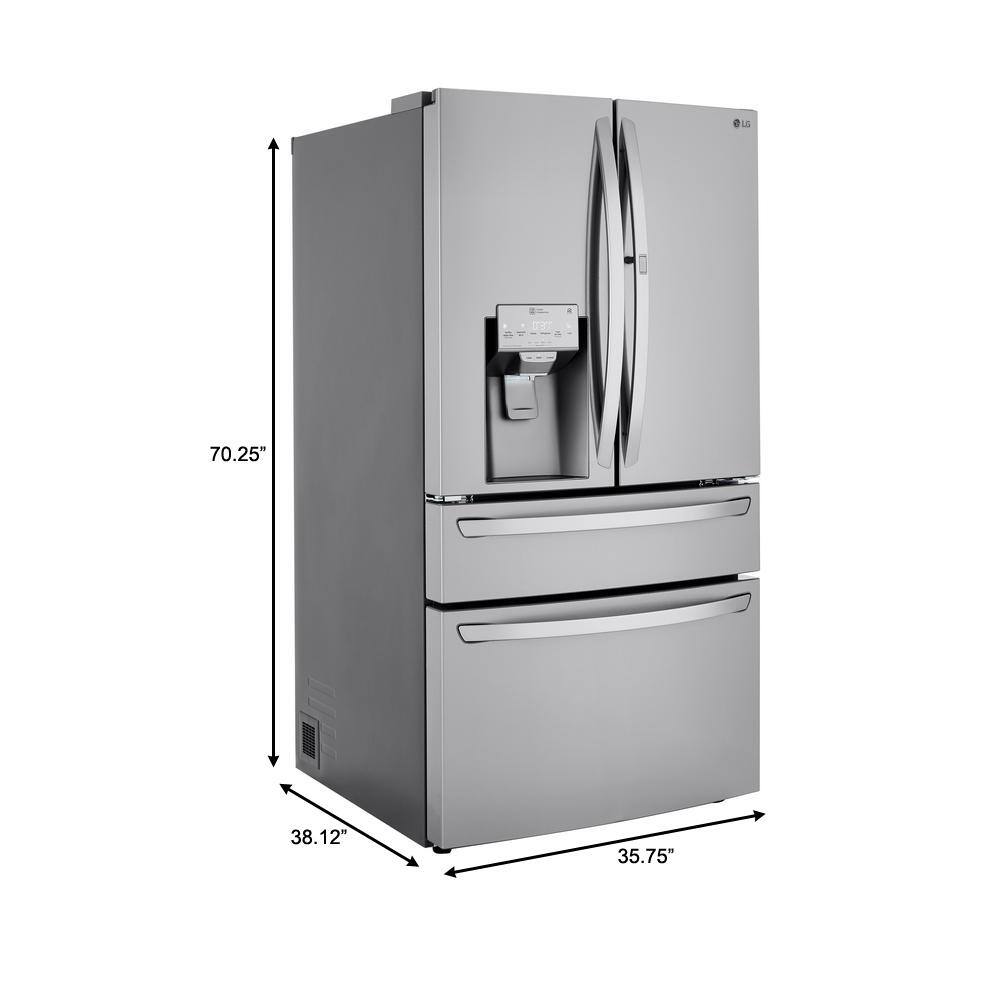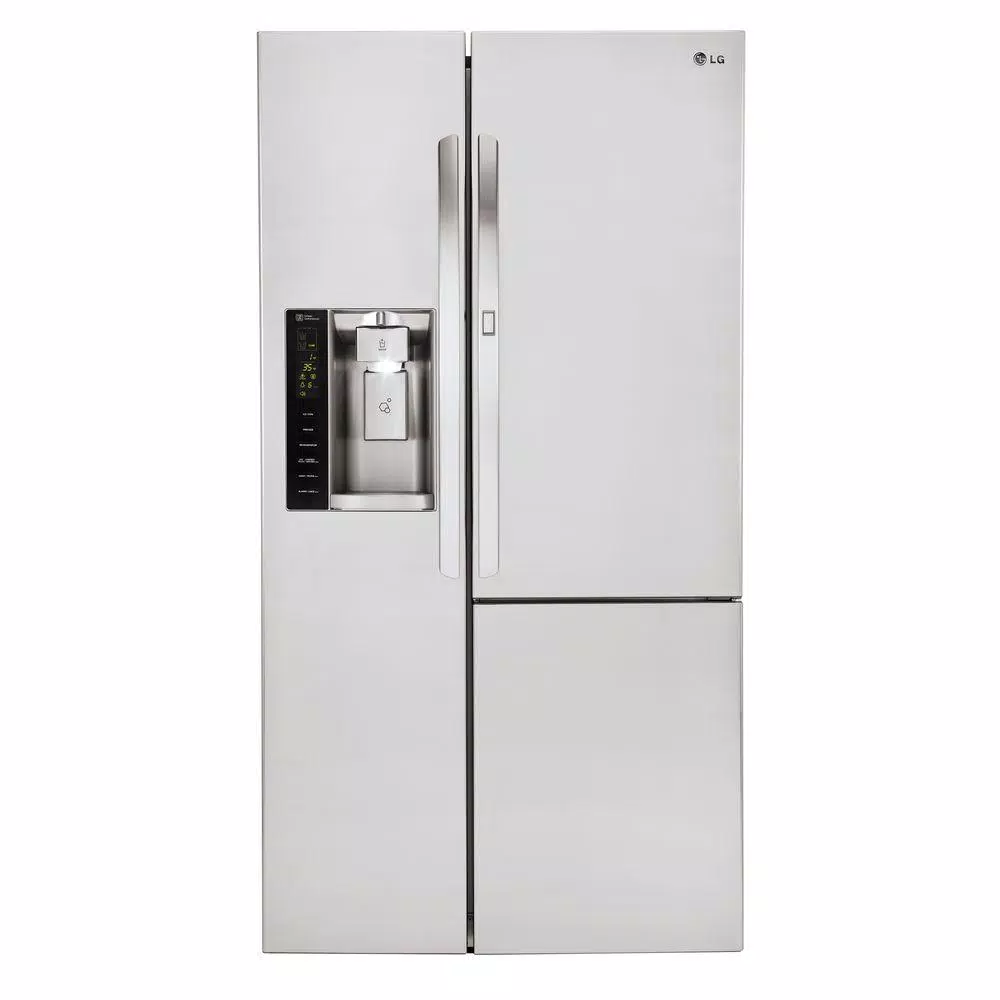Samsung 22.6 cu. ft. 4-Door French Door Refrigerator with Recessed Handle in Stainless Steel, Counter Depth
FlexZone – Versatile middle drawer with 4 temp settings. Auto WaterFill – Create flavored water from your fridge. Built-in Look – Sleek, built-in design.
This 22 cu. ft. Samsung refrigerator has a beautiful, sleek design that fits any kitchen decor. Sleek, built-in look, large capacity refrigerator featuring FlexZone helping keep family’s food organized.
- Twin Cooling – Maintains both high levels of refrigerator humidity to keep perishable fruits and vegetables fresher longer, and dry freezer conditions means less freezer burn for better tasting frozen foods
- Recessed Handles for true built-in look
- Counter Depth – Sleek, built-in design
- 22 cu. ft. capacity – Large capacity to fit all your favorite foods
- Ice Master – Produces up to 8.8 lbs. of ice per day
- High-Efficiency LED Lighting – Brighter, cooler, and more energy-efficient
- Fingerprint-Resistant Coating
- 2016 ENERGY STAR Certified – Meets the strict 2016 energy efficiency specifications and standards
- Auto Water Fill with Infuser – Easily fill your favorite pitcher quickly with the auto fill option. Also add your favorite flavor to your water, with the flavor infuser
- FlexZone Drawer – Versatile drawer with 4 temperature control settings and a Smart Divider
- 5 years Parts and Labor on sealed Refrigeration system only
- 10 Years Part and 5 years Labor on Digital Inverter Compressor (Compressor, evaporator, condenser, drier, connecting tubing)
- Built In Look (Flat Panel)
- Available in Black Stainless Steel and Stainless Steel
Additional information
| Depth (Excluding Handles) | 29.25 |
|---|---|
| Depth (Including Handles) | 29.25 |
| Depth (Less Door) | 24 |
| Depth With Door Open 90 Degrees (In) | 43.1 |
| Height to Top of Door Hinge (in.) | 70 |
| Height to Top of Refrigerator (in.) | 68.875 |
| Product Depth x Height x Width (in.) | 29.25 x 70 x 35.75 |
| Refrigerator Width (In.) | 35.75 |
| Manufacturer Warranty | Five (5) years Parts and Labor on sealed Refrigeration system only* Ten (10) years Part and Five (5) years Labor on Digital Inverter Compressor (*Compressor, evaporator, condenser, drier, connecting tubing) |






by Kelly
We are so happy with this fridge, the design is so sleek and fits so nicely in an open concept kitchen. and it’s spacious inside and easy to organize and clean.
by Wendy
bought this refrigerator 2 years ago. all features work excellent including our ice maker. we have a water purification system and have not had the issues so many reviews have stated. worst issue is you could hear the ice dropping throughout the night. we use the ice and water every day and enjoy the water dispenser fill up. the only problem we have had is like another reviewer stated, the hinges don’t allow for the doors to open forward so you can’t be close to a cabinet or wall. mine was too close to the wall on its right and the top corner of the fridge hit the wall when first installed and knocked a piece of the black coating off. i moved the unit to the left a little and have not had any issue with it since. touch-up paint stratus gray dh81-11983a
by Marvin
The recessed handles make for a sleek look and we love the fingerprint resistant doors. Much easier to keep clean highly recommend!